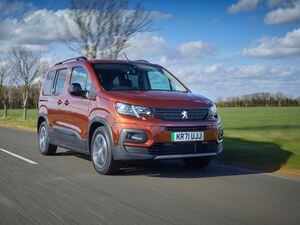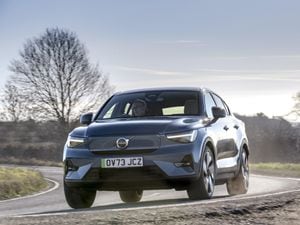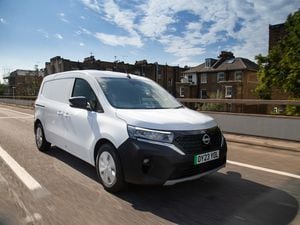First Drive: The Peugeot e-Rifter brings electric power to this boxy MPV
Peugeot’s revised Rifter range is now electric-only, but is that the right decision? Ted Welford finds out.

What is it?

The electric van market is growing at a rapid rate and leading the way is the vast automotive empire that is Stellantis. Incorporating commercial vehicles from Citroen, Peugeot and Vauxhall, all three firms offer electric versions of every van they sell. But it doesn’t stop there as they’re also selling battery-powered versions of the MPV models too – you know, the ‘vans with windows and seats’.
It leads us to the Peugeot e-Rifter, the firm’s latest EV, and essentially the electric MPV version of the Partner van. Using the same powertrain as that found in the firm’s Peugeot 208 supermini and 2008 crossover, could this MPV be an ideal electric family car?
What’s new?

Almost as soon as the e-Rifter has reached dealerships, Peugeot – along with Citroen and Vauxhall – has announced that petrol and diesel versions of these models have been discontinued. So, this review suddenly changes from ‘is the e-Rifter the pick of the range’ to, more simply, ‘should you choose the e-Rifter’.
Aside from a few electric-specific dials and a more modern centre console, it’s pretty much no different to the petrol and diesel Rifters that went before it, though. Even in terms of design, a few badges are the only real giveaway that it’s electric.
What’s under the bonnet?

Combining a 50kWh battery with an electric motor, the e-Rifter produces 134bhp and 260Nm of torque – meaning 0-60mph can be dispatched in 11 seconds, with the top speed capped at 83mph.
In terms of range, it becomes clear just what a big effect that boxy design has on dynamics, as while the sleek e-208 can manage up to 225 miles on a charge, Peugeot claims 172 miles for the e-Rifter. During our winter testing, it was averaging around 2.7 miles per kWh, meaning it was only really managing 120 miles from a full charge. In terms of top-up speeds, the e-Rifter can charge at up to 100kW, meaning an 80 per cent charge can be completed in around half an hour. Using a 7.4kW wallbox at home will take 7.5 hours.
What’s it like to drive?

You normally expect to find a rattly diesel engine under the bonnet of something like the Rifter, so the smooth and quiet from the electric motor immediately makes it far more pleasant to drive. It’s also got a decent turn of pace to it, particularly if you put it in ‘Sport’, where it feels far quicker than its performance figures suggest.
It’s also impressively easy to drive, with so many large windows that it’s like being behind the wheel of a greenhouse, while light steering makes it easy to park. It’s not really much wider than a typical family hatchback, either, meaning you can thread it down narrower streets without too much worry. As you’d expect, it’s not the best handling or cosseting when it comes to comfort, but it’s a great steer that nails what’s required of a car like this.
How does it look?

While there’s only so much you can do to try and hide the obvious van origins, Peugeot’s designers have done a decent job of injecting some extra flair into the e-Rifter without sacrificing practicality. Ever since it debuted it’s offered chunkier SUV-like styling, which certainly gives it some extra presence next to blander rivals.
If you want a bit more style, the top-spec GT version will be the one to go for, as it brings nicer 17-inch alloy wheels, extended gloss black styling and a more pleasing front end.
What’s it like inside?

Jump inside and what dominates the e-Rifter is how roomy it is. Clever placement of the battery beneath the boot floor means it’s no less practical than the old petrol and diesel versions. With the rear seats folded (you can choose it with seven chairs, though our test car had five), you get a completely flat floor, which extends up to a gigantic 4,000 litres if you choose the Long model, At 4.75m, it’s 35cm longer than the Standard version.
There’s loads of room in the rear seats, while the cabin has a vast number of storage spaces, including a generous area in the centre console.
Elsewhere in the Rifter’s cabin, it’s got Peugeot’s now-familiar small steering wheel and clever 10-inch digital dials ahead of you. Some struggle to get comfortable with this setup, so it’s worth making sure it works for you.
What’s the spec like?

The e-Rifter comes in two trim levels – Allure Premium or GT. Our test car was the former, and it really gets everything you’d ever need, such as a reversing camera, 10-inch digital instrument cluster and eight-inch touchscreen.GT then brings the more stylish look we’ve already touched on, along with dual-zone climate control, keyless entry, a funky brown interior ambience and individual rear seats in the second row (on Allure Premium, you get the more typical two-and-one configuration).
The only e-Rifter that qualifies for the electric car grant is the entry-level Allure version, which is priced from £30,450 after the £1,500 grant has been deducted. GT models, because their price is above the threshold that qualifies for the grant, start from £34,690.
Verdict
The Peugeot e-Rifter is most certainly a welcome addition to the electric family car class, with its vast versatility, generous equipment levels and easygoing drive meaning it will tick many boxes for buyers.
The real-world range of the e-Rifter doesn’t seem to be great, though, so if you need something that can go further, seeking out a used petrol or diesel Rifter, or a model from a rival brand, may be the best option.





